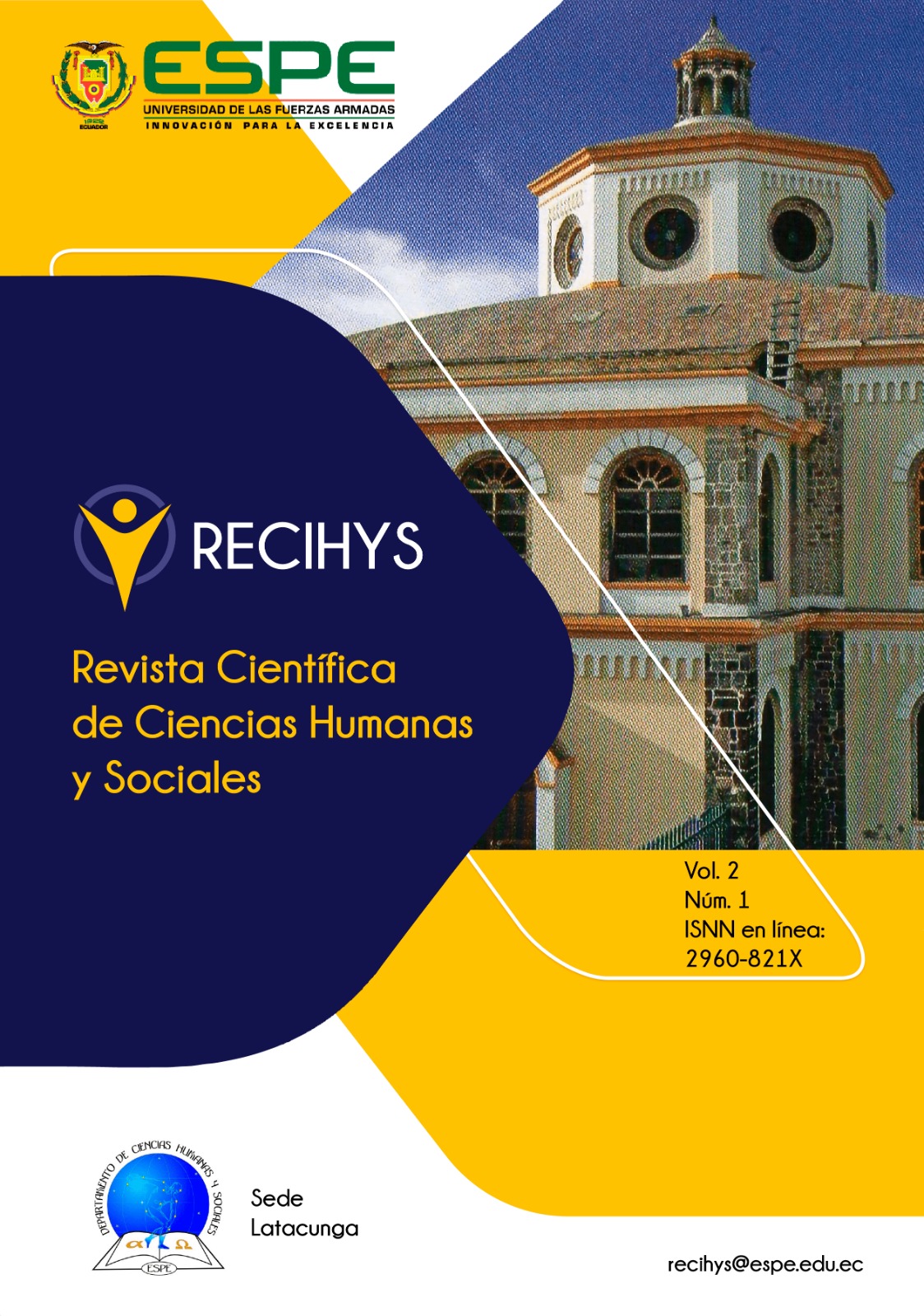Gamification in learning simple patterns
Main Article Content
Abstract
The research work focuses on the study of gamification and the development of simple patterns in children from 4 to 5 years old. The objective was based on analyzing gamification in the development of simple patterns in children from 4 to 5 years old from the "12 de Octubre" Basic Education School. The methodology has a qualitative approach that seeks to understand in depth the study phenomenon and a type of basic research that try to formulate new knowledge, its scope is descriptive since it is intended to detail the qualities and characteristics that exist between the two variables, of bibliographic type, with a non-experimental design.
The technique used for data collection was the interview with his instrument, the interview script with open questions that were validated by experts in the area, addressed to teachers of Level II of Initial Education of the "12 de Octubre" Basic Education School and an observation sheet applied to children from 4 to 5 years, the results were obtained through the analysis and triangulation of data, in order to meet the objectives proposed in the research. It is concluded that gamification is a motivating didactic strategy that favors the development of simple patterns in children, achieving a significant learning.
Downloads
Article Details

This work is licensed under a Creative Commons Attribution 4.0 International License.
Authors who publish in this journal agree to the following terms: Authors retain the copyright and guarantee the journal the right to be the first publication of the work, as well as, licensed under a Creative Commons Attribution License that allows others share the work with an acknowledgment of the authorship of the work and the initial publication in this journal. Authors may separately establish additional agreements for the non-exclusive distribution of the version of the work published in the journal (for example, placing it in an institutional repository or publishing it in a book), with acknowledgment of its initial publication in this journal. Authors are allowed and encouraged to disseminate their work electronically (for example, in institutional repositories or on their own website) before and during the submission process, as it may lead to productive exchanges as well as further citation earliest and oldest of published works.
How to Cite
References
Acosta, Y., Pincheira, N., & Alsina, Á. (2022). Tareas y habilidades para hacer patrones de repetición en libros de texto de educación infantil. AIEM, 91-110. Obtenido de file:///C:/Users/usuario/Downloads/Documat-TareasYHabilidadesParaHacerPatronesDeRepeticionEnL-8867072.pdf
Biel, L., & García, A. (2015). Gamificar: El uso de los elemetos del juego en la enseñanza de español . Obtenido de Cervantes : https://cvc.cervantes.es/ensenanza/biblioteca_ele/aepe/pdf/congreso_50/congreso_50_09.pdf
Balbuena, J. (2017). Aplicación del juego como estrategia para mejorar, patrones de repetición, de la competencia actúa y piensa matemáticamente en situaciones de regularidad, equivalencia y cambio, de estudiantes de 5 años de la institución educativa inicial la Pólvora- Cond. Obtenido de https://repositorio.unc.edu.pe/bitstream/handle/20.500.14074/2440/T016_43380152_S.pdf?sequence=1&isAllowed=y
Barón, N. (2020). Conectivismo. Obtenido de Educación con responsabilidad social: https://portal.ucol.mx/content/micrositios/260/file/conectivismo_resena.pdf
Bojorque & Ochoa. (2022). Influencia de factores cognitivos y contextuales en el desempeño de patrones matemáticos, a edades tempranas. Scielo, 1258. Obtenido de https://www.scielo.br/j/bolema/a/gDrmKxBZ3WWmwShwWLQycTh/?format=pdf&lang=es
Cabascango, M. (2018). Estrategias didácticas para el ámbito de desarrollo del medio natural y cultural en primer grado de educación general básica en la escuela 30 de octubre . Obtenido de Dspace : https://dspace.ups.edu.ec/bitstream/123456789/15867/1/UPS-QT13019.pdf
Cordova, J. (2020). La gamificación como estrategia de aprendizaje en niños de Educación Inicial . Obtenido de Universidad César Vallejop: https://repositorio.ucv.edu.pe/bitstream/handle/20.500.12692/69883/Cordova_AJC-SD.pdf?sequence=1&isAllowed=y
Escandón, C., & Lojano, T. (2023). Desarrollo de patrones matemáticos en niños de 3 a 6 años. Dspace. Obtenido de http://dspace.ucuenca.edu.ec/bitstream/123456789/42726/1/Trabajo-de-Titulaci%C3%B3n.pdf
Espinosa, C., & Gregorio, M. (2018). Gamificación en Educación Infantil. Obtenido de Publicaciones Didácticas : https://core.ac.uk/download/pdf/235851799.pdf
García, S., & Peña, S. (2019). Conectivismo y proceso de aprendizaje de las ciencias sociales en estudiantes de educación general básica superior. Obtenido de Implementación de recursos educativos basados en el conectivismo: http://repositorio.ug.edu.ec/bitstream/redug/46108/1/BFILO-PSM-19P154.pdf
Ministerio de Educación. (2014). Currículo de Educación inicial. Obtenido de Educación: https://educacion.gob.ec/wp-content/uploads/downloads/2016/03/CURRICULO-DE-EDUCACION-INICIAL.pdf
Ministerio de Educación. (2014). Currículo de Educación Inicial . Obtenido de https://educacion.gob.ec/wp-content/uploads/downloads/2016/03/CURRICULO-DE-EDUCACION-INICIAL.pdf
Ludeña, J., & Zambrano, J. (2022). Guía de actividades lúdicas para el desarrollo del pensamiento lógico-matemático en niños de Educación Inicial. Scielo.
Romero, A., & Espinosa, J. (2019). Gamificación en el aula de Educación Infantil. Dialnet, 71.
Rojas, S., & Ávila, C. (2022). Gamificación para el desarrollo lógico matemático en niños de 4 a 5 años. Dspace.
Wijns, N., Verschaffe, L., & Torbeyns, J. (2021). Enfoque espontáneo en estructuras matemáticas: patrones y clasificación. UEES. Obtenido de https://revistas.uees.edu.ec/index.php/Podium/article/view/653/606
Valenzuela, M. (2021). Gamificación para el aprendizaje. Una aproximación teórica sobre la importancia social del juego en el ámbito educativo. REA. Obtenido de http://portal.amelica.org/ameli/journal/248/2482275001/html/

